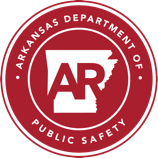
ADEM’s 9-1-1 Coordinator
The 9-1-1 Coordinator’s office serves as a liaison between the local PSAPs and the state government. This position also works to educate the public and public safety stakeholders on the capabilities of the state’s 9-1-1 system, as well as working to improve our system while preparing to transition to Next Generation 9-1-1. The 9-1-1 Coordinator also works to promote Smart911 throughout the state.
Next Generation 911
The National Emergency Number Association (NENA) lists six building blocks for NG911: ESInet, International Standards Compliant IP functions, Internet Engineering Task Force (IETF) standards, Databases and Data Management, Security, and Human Processes.
NENA NG911 Document (2008)
NENA lists requirements for basic or “baseline” requirements for NG911 designation, but the components are changing rapidly as new technology develops:
- ESInet (Emergency Service IP network)
- GIS data creation to support 3 and 6 below, and associated management tools
- Publication of Authoritative NG9-1-1 Validation related Databases for use by OSPs and Location DB providers to pre-validate civic addresses (in replacement of MSAG), supported by LVF and LIS functionality
- Publication of Authoritative NG9-1-1 Routing Data for state and regional levels
- Support for legacy originating services via gateways (e.g., access to traditional ALI databases)
- Geospatial controlled IP software call routing function (ECRF and ESRP)
- The ability to control call routing based upon a policy routing function (PRF) with standardized methods to define/build and control Policy Rules
- Additional data acquisition after call delivery to facilitate call processing by calltaker or other public safety entities (this may address ANI/ALI “rebidding” if a location cannot be determined by the caller or verified by the calltaker)
- Support for transfer of calls with accumulated calltaker notes and added data, or an access key to such data, to any authorized entity interconnected by ESInets
- Ability to interconnect with other NG9-1-1 systems and to interwork with E9-1-1 systems
- Support for system monitoring/logging/discrepancy reporting necessary to support troubleshooting and ongoing operation and maintenance
NENA NG911 Baseline Document
Who has adopted NG911 (or components) in Arkansas?
- Ashley County (text-to-911)
- Benton County (CAD, text-to-911, IP hosted)
- Central EMS (IP hosted)
- City of Bentonville (text-to-911)
- City of Fayetteville (CAD, IP hosted)
- City of Jonesboro (text-to-911)
- City of Paragould (CAD, consolidated communication center)
- City of Rogers (text-to-911)
- City of Siloam Springs (text-to-911)
- Conway County (consolidated communication center)
- Craighead County (consolidated communication center)
- Crittenden County (text-to-911)
- Garland County (CAD)
- Metropolitan Emergency Medical Services (CAD, IP hosted)
- Perry County (text-to-911)
- Pope County (text-to-911)
- Randolph County (text-to-911)
- Saline County (text-to-911)
State NG911 Plan:
A working group comprised of the state’s 911 stakeholders: GIS analysts, communication center managers, representatives from fire departments, police departments, and EMS agencies, county judges, city managers, and technical experts developed a Statewide NG911 plan that was completed in May 2018. The plan addresses goals that Arkansas will need to meet to become fully NG911-operational.
Citizen Resources
What is Smart911?
Smart911 serves as an enhancement to our state’s legacy 9-1-1 system. Smart911 allows residents to go on-line and create a safety profile for their household. In the event that you or a family member ever has to call 9-1-1, the safety profile you created will be available to 9-1-1 Telecommunicators (usually called dispatchers). Smart911 allows you to enter as much or as little information as you please. The site is free, private, and secure. Safety profile can include information on family members, phone numbers, work/home/school addresses, medical history, allergies, pets, pictures, floor-plans, utility shut-off valves – anything you would like emergency responders to know about your family and property. Again, this information will only be available if you call 9-1-1 from a phone number linked to your safety profile.
https://www.smart911.com/
Is calling 9-1-1 from a cell phone the same as calling from a land-line?
No. Land-lines are tied to a specific location that is immediately available to the telecommunicator. While wireless location accuracy is improving, it is always best to call 9-1-1 from a land-line whenever possible. Location is the most important question that a 9-1-1 telecommunicator will ask a caller. Practice situational awareness and always know your location. Emergency responders must have a physical address to get help where it’s needed.
What should I do if I accidently call 9-1-1?
Stay on the line and tell the telecommunicator you placed the call by mistake.
Who assigns 9-1-1 addresses?
9-1-1 addresses are assigned by your local jurisdiction. Contact your county judge or local emergency management coordinator to find out who is responsible for your area.


